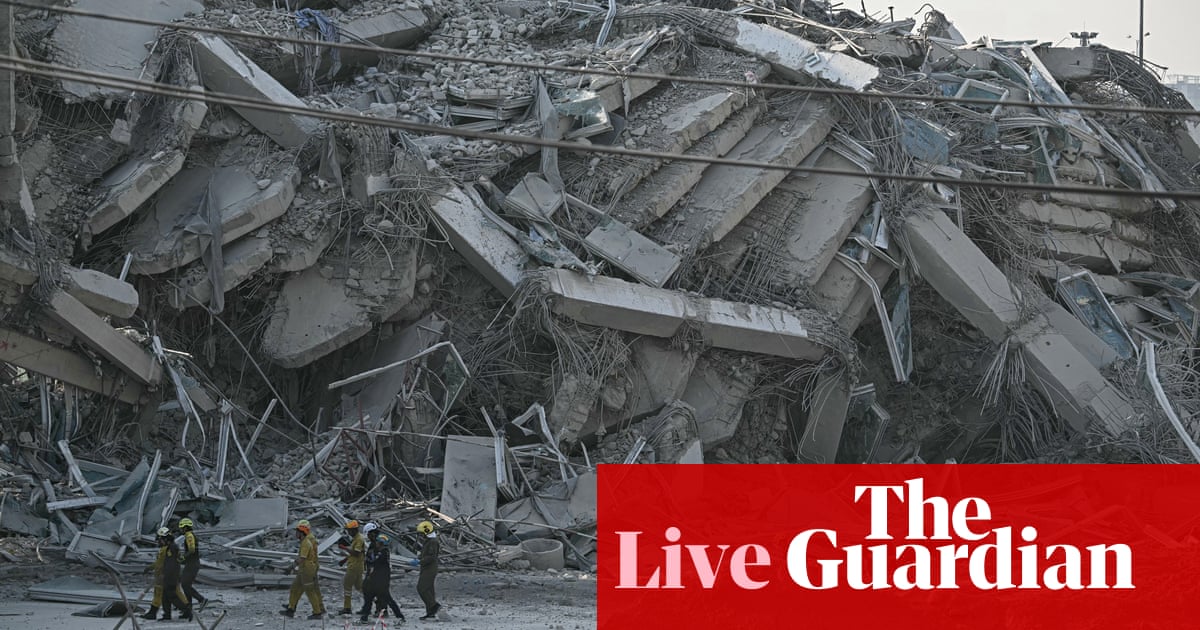Thailand, Myanmar Earthquake: Death Toll Rises in Bangkok
A devastating earthquake that struck near the Myanmar-Thailand border has tragically claimed lives in Bangkok, raising concerns about infrastructure and preparedness in the region. The death toll continues to rise, highlighting the urgent need for improved seismic safety measures and disaster relief efforts.
Earthquake's Impact on Bangkok
While the epicenter of the earthquake was located in Myanmar, its significant magnitude sent tremors across the border, impacting neighboring Thailand, particularly Bangkok. The initial reports indicated a death toll in the double digits in Bangkok, but this number is sadly expected to increase as rescue efforts continue and the full extent of the damage is assessed.
Damage Assessment and Rescue Operations
Rescue teams are working tirelessly to locate survivors trapped beneath collapsed structures. Buildings in older parts of Bangkok, known for less stringent building codes, have sustained significant damage. The focus is currently on:
- Locating and rescuing survivors: Teams are using specialized equipment and K-9 units to search for individuals trapped under rubble.
- Providing medical assistance: Hospitals in Bangkok are overwhelmed with casualties, and medical professionals are working around the clock to provide care.
- Assessing structural damage: Engineers are inspecting buildings to determine the extent of the damage and identify unsafe structures.
- Coordinating international aid: The Thai government is coordinating with international organizations to receive aid and assistance in rescue and relief operations.
Concerns Regarding Building Codes and Infrastructure
The earthquake has brought renewed attention to the building codes and infrastructure preparedness in Bangkok. While the city has experienced earthquakes in the past, the recent event underscores the need for:
- Stricter building codes: Modernizing building codes to better withstand seismic activity is crucial for mitigating future damage.
- Improved infrastructure: Investing in infrastructure upgrades to ensure resilience against natural disasters is paramount.
- Public awareness campaigns: Educating the public on earthquake preparedness, including emergency response plans and safety procedures, is essential.
The Myanmar Earthquake: Epicenter and Magnitude
The earthquake's epicenter was located in [Insert precise location in Myanmar with coordinates if available]. Initial reports suggest a magnitude of [Insert Magnitude] on the Richter scale, making it one of the strongest earthquakes to hit the region in recent years. The depth of the quake also played a significant role in the widespread damage. [Link to a reputable seismological source for further details].
International Response and Aid Efforts
Numerous countries and international organizations have pledged support to both Myanmar and Thailand in the aftermath of the earthquake. This includes providing financial aid, sending rescue teams, and delivering essential supplies like medical equipment, food, and shelter. [Mention specific countries and organizations providing aid if available, linking to credible news sources].
Moving Forward: Lessons Learned and Future Preparedness
This devastating earthquake serves as a stark reminder of the importance of preparedness and resilience in the face of natural disasters. Both Thailand and Myanmar must work together, alongside the international community, to:
- Improve seismic monitoring systems: Early warning systems are crucial for giving residents sufficient time to evacuate before an earthquake strikes.
- Strengthen building codes and infrastructure: Investing in resilient infrastructure and enforcing stricter building codes are essential for minimizing future damage.
- Develop comprehensive disaster preparedness plans: Comprehensive plans involving evacuation routes, emergency shelters, and communication systems are crucial for minimizing casualties.
The tragic events in Bangkok highlight the devastating impact of earthquakes, even in areas not directly at the epicenter. The international community must continue to support relief efforts and collaborate on long-term solutions to ensure the safety and resilience of communities in earthquake-prone regions.
Call to Action: Stay informed about the situation through reputable news sources and consider donating to verified relief organizations to support victims and recovery efforts.
